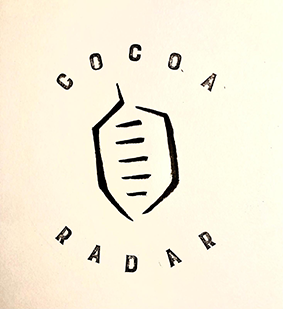The US chocolate maker has reportedly asked the Commodity Futures Trading Commission (CFTC) in New York to buy an amount of cocoa from ICE exchange stocks that is larger than the current threshold limits for traders.
According to a report on Reuters, Hershey has requested to receive at least 90,000 metric tons of cocoa from ICE-certified stocks using futures contracts, which would equal 9,000 contracts. The current position limit set by CFTC is 4,900 contracts.
In response to a Reuters request for comment, the company denied running low on beans and said it is "well covered" for its cocoa needs for 2025.
Hershey and the LID
It’s not the first time Hershey’s has attempted a smash-and-grab on the market.
In 2019, it was accused of trying to circumvent the Living Income Differential (LID) when it was introduced by buying cocoa in advance through the futures market.
The LID, implemented by Ghana and Côte d’Ivoire, the world’s largest cocoa producers, added a $400-per-ton premium on cocoa exports to improve the income of cocoa farmers.
What Happened:
- Hershey reportedly purchased large quantities of cocoa through the ICE futures exchange, bypassing the traditional supply chain in Ghana and Côte d’Ivoire.
- By purchasing cocoa this way, Hershey avoided paying the LID premium, as the futures market transactions occurred outside the direct jurisdiction of the two countries’ regulatory frameworks.
The fallout:
1. Cote d’Ivoire and Ghana:
- The governments and their joint cocoa marketing initiative, Le Conseil du Café-Cacao (Côte d’Ivoire) and Cocobod (Ghana) criticized Hershey for undermining the LID.
- In response, they temporarily suspended Hershey from sustainability certification programmes like Rainforest Alliance and Fairtrade.
2. Hershey’s response:
- Hershey denied intentionally bypassing the LID and stated that it remained committed to sustainability and improving farmers’ livelihoods.
According to analysts, if successful, Hershey's latest market move would drain ICE-certified stocks, negatively affecting other market participants.
Cocoa traded lower this week after traders reacted to ICE Futures Europe's attempt to tame market volatility.
According to a report from Bloomberg, the most active contract fell by 4.8% in London after ICE Futures Europe lowered the contract’s accountability levels to 1,500 lots for a single month or 3,000 lots for All Month Accountability Level, which is the threshold for when a trader needs to disclose more information about their positions.
Bloomberg reported that the new policy will take effect on 13 January.
Cocoardar.com understands that if a position exceeds an Accountability Level, the Exchange may require further information about the nature and purpose of the position of the account.
It’s unclear whether Hershey's action was a direct response to the move by ICE Futures Europe to lower its disclose threshold.
Cocoa market nerves
What is certain is that Hershey's audacious move is stoking market nerves. According to the Finimize financial information platform, it highlights potential vulnerabilities in global commodity trading and emphasizes the role of regulatory decisions in maintaining market stability.
The sharp increase in cocoa prices over Christmas could substantially affect future earnings, as cocoa hedges typically extend for nine months or more.
Mondelēz International is also reportedly determining its pricing strategy. Rachael Rajan from investing.com said the company may consider implementing more substantial price increases for its chocolate products compared to Hershey, which has already announced a 3-4% net pricing action for 2025.
- Intercontinental Exchange (ICE) operates leading regulated exchanges, trading platforms and clearing houses serving global markets for commodites.
Mentioned in this article:
Official: The Top 10 Most Influential People in Cocoa & Chocolate 2024

It's the list the industry has been waiting for. Have we missed anyone? Subscribe to see the results and give your opinion and feedback

